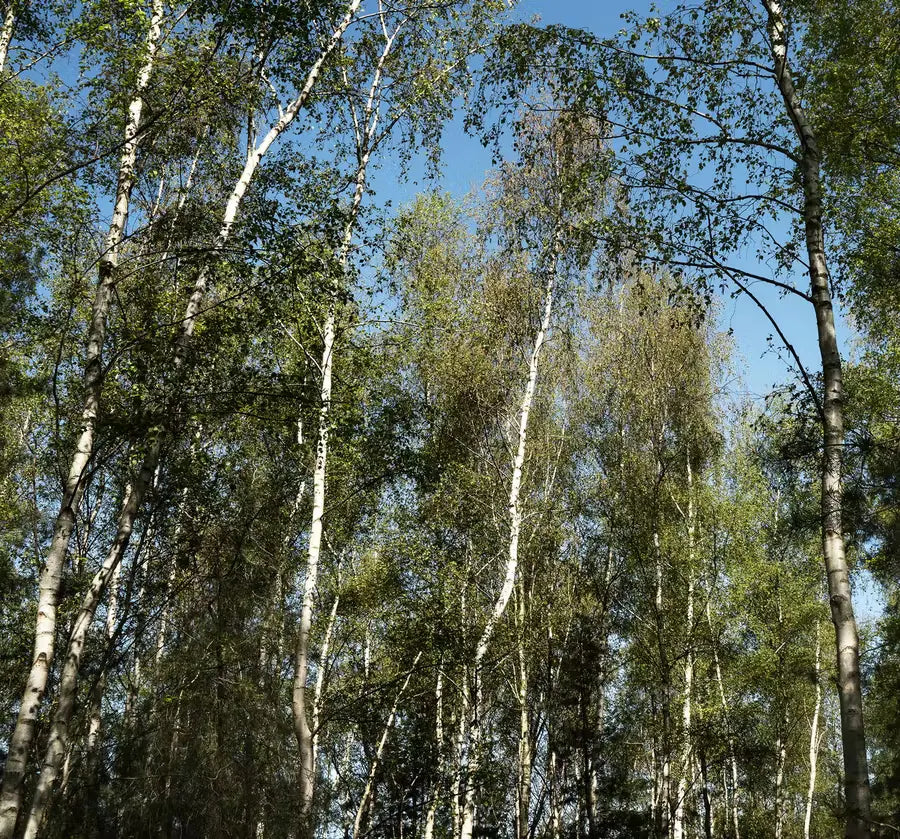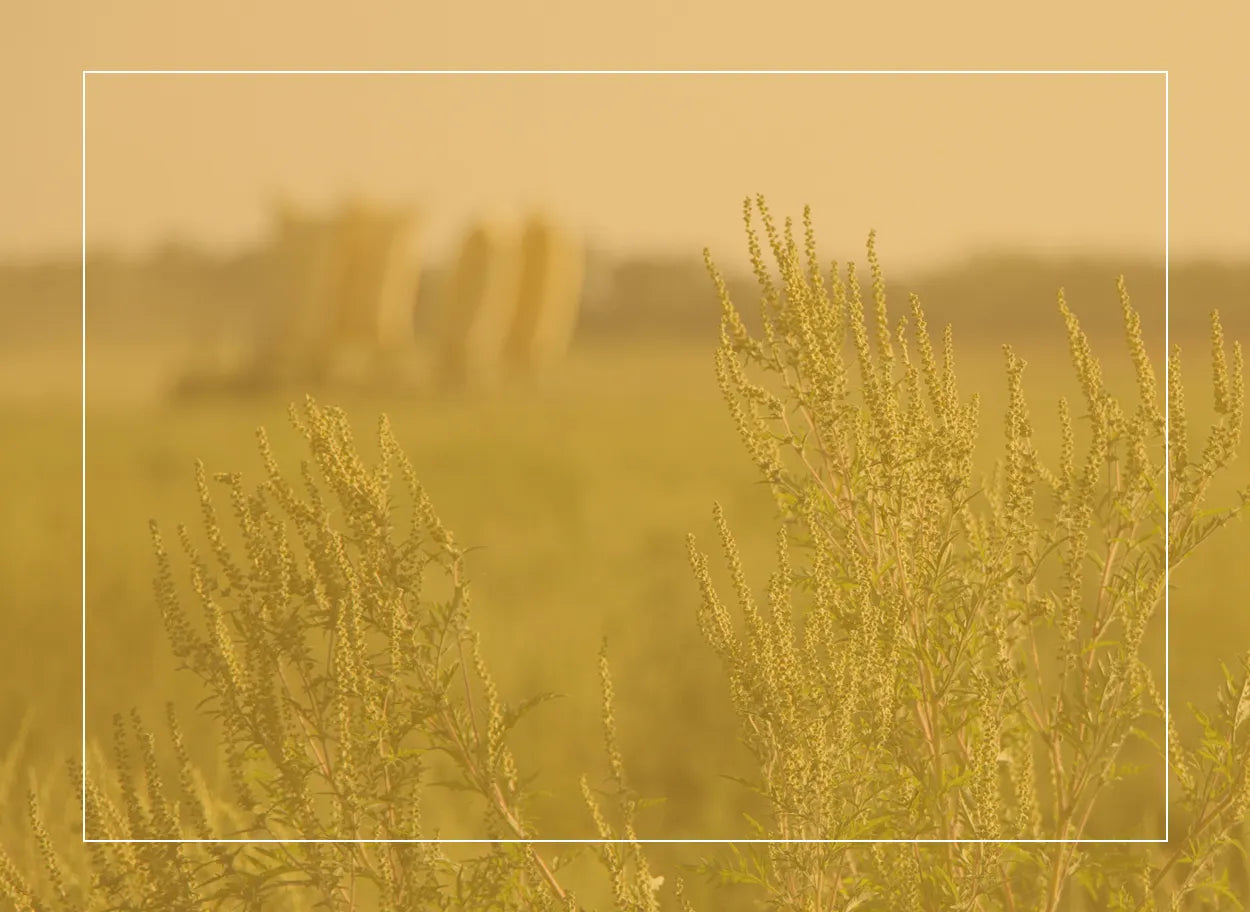What is tree pollen allergy?

Trees give us many benefits. They produce life-sustaining oxygen and soak up harmful greenhouse gases. But for people allergic to tree pollen, they can be irritating. Hay fever isn’t just about grass pollen and ragweed pollen allergies. Trees can make you sneeze too. In fact, they’re usually the first plants to mark the start of a new allergy year.
The good news is there are ways to manage tree pollen allergy. Especially when you know what to look out for, what the treatment options are and when to use them.
Tree pollen (allergy) season
People tend to think of tree pollen allergy as a spring thing. And your sniffles and sneezes might only start as the sky brightens. But it depends on what type of tree pollen you’re allergic to. For instance, hazel catkins open in late winter to release their pollen before the leaves get in the way.
Where you live will also affect the tree pollen season. Hay fever (allergic rhinitis) could be making you feel unwell as early as January in the southern United States. Cold winters and very heavy rain can delay pollination. But tree pollen season may then go on later in the year than usual and overlap with the next hay fever trigger, grass.
Why is tree pollen so sneezy?
Trees are wind-pollinated. They release millions of tiny pollen grains into the air with the hope of finding the same species and making new trees. The tree pollen particles are very small. So small you’d struggle to see them flying by in the air. And they can travel hundreds of miles from where they started.
Get localized daily tree, grass and weed pollen levels, weather and air quality information, plus personalized allergy insights.

So, there’s lots of tree pollen in the air in the spring. And it’s all too easy to breathe it in without even realizing until you get allergy symptoms. One upside of spring showers is they may help dampen down hay fever symptoms again. The rain washes tree pollen away and the humidity in the air goes on weighing it down for a while afterward.
Tree pollen allergy symptoms
Hay fever is common to tree, grass and weed pollen allergies. The symptoms can be mild to moderate depending on how much your body reacts to the pollen. They usually include:
- Stuffy nose
- Runny nose, usually with clear fluid
- Sneezing
- Itchy nose, palate and throat
- Post-nasal drip (the feeling of mucus moving down the back of your throat)
- Itchy, red or watery eyes
- Cough
- Tight chest or wheezing
- Tiredness
That’s not to say you’ll definitely get all these symptoms at once. Some people may be more likely to find their nose itchy, while others might be more prone to watery eyes. Either way, these symptoms can have a real impact on your life. Seeking accurate diagnosis and advice on treatment can be well worthwhile.

Male flowers produce pollen while the female makes the seeds and fruit. That’s partly why cities can be so sneezy. Planners often choose male trees to stop sidewalks getting messy.
Why am I allergic to tree pollen?
You might wonder why you get the springtime sneezes. It all comes down to how your immune system reacts when it encounters tree pollen. Most people's immune system does not see tree pollen as a threat. They breathe it in and their body ignores it.
For others, pollen triggers an urgent immune response. Your immune system makes antibodies known as immunoglobulin E (IgE). These antibodies remain in the blood, ready to defend your body when you come across tree pollen again.
An allergic reaction happens when the antibodies try and tackle the threat as quickly as possible. They instruct other cells to produce histamine and similar substances. This is why you might get nasal congestion or sneeze a lot when you breathe in the fine tree pollen.
Which types of tree pollen cause symptoms?
Many trees can trigger an allergic reaction. In fact, there are at least 50 different tree pollen allergens identified worldwide. But some trees are more likely to do this than others. Take the birch tree. Each individual catkin (the male flower) can release up to 6 million particles of pollen. And the birch tree's season runs for two months or more.
But birch is not the only culprit. Other offenders include:
- Alder
- Ash
- Cottonwood
- Elm
- Juniper
- Maple and box elder
- Oak
Yes, children can
get hay fever

Does tree pollen allergy mean no trees in my garden?
No you don’t have to hang up your gardening gloves just yet. There are more allergy-friendly trees you can enjoy. Some species have heavy pollen. Rather than the wind, insects carry it from flower to flower. Think about planting an apple or crab apple tree, a flowering cherry or plum, an ornamental pear, dogwood or magnolia.
You could also ask the plant nursery if they sell female trees of the type you want. The red maple, for instance. Only male flowers produce pollen while the female makes the seeds and fruit. That’s partly why cities can be so sneezy. Planners often choose male trees to stop sidewalks getting messy. They’re in many school yards too.
Tree pollen cross-reactions
Allergy to one type of tree can make you react to other types too. This is because the proteins in the pollen are similar. Cross-reactions can also happen between trees and grass or weed pollen. For instance, people who are allergic to alder pollen may also get a blocked nose from birch, beech and oak, as well as grass, ragweed and mugwort pollen.
Food and tree pollen allergies
Another type of cross-reaction involves fruit, vegetables, spices and nuts. It happens for the same reason; similar proteins confuse your overactive immune system. So allergy to alder pollen could give you a tingly mouth when you eat apples, cherries, peaches, pears, parsley, celery, almonds or hazelnuts. It’s called pollen food syndrome or oral allergy syndrome. And the symptoms are usually mild and only in your mouth, throat, lips or face.
An itchy mouth and throat from eating nuts, peanuts and soybeans may also be a food allergy which can cause severe allergic reactions. So, see a healthcare provider if this happens to you.

Why is ragweed allergy
so common?
Tree pollen allergy: Getting a diagnosis
Seasonal springtime symptoms which feel like hay fever might make you think about allergy testing. This could help you to pinpoint if trees or other plants cause you to react. Or whether it's something else entirely.
Your healthcare provider or allergist can organize a skin prick test or allergy blood test and interpret your response. To help diagnose your condition they’ll also ask about your symptoms. This might include any possible cross-reactivity with food.
Managing tree pollen allergy
Your treatment options will depend on the severity of your tree pollen allergy. Taking these steps to avoid tree pollen can help:
- Monitoring the pollen levels – our app can help
- Keeping windows and doors shut when tree pollen is high
- Washing clothes and bedding frequently and drying them indoors
Easing mild to moderate symptoms can start with a simple saline nasal rinse from the pharmacy. You can also ask about common over-the-counter antihistamines and corticosteroids. Both may be used to relieve hay fever symptoms when pollen levels are high. Stronger types will need a prescription from your healthcare provider.
Tree pollen allergy immunotherapy
Immunotherapy is a long-term treatment for tree pollen allergy. It can address the root cause rather than the symptoms by desensitizing your immune system. Repeated tiny doses of your trigger, either as tablets or allergy shots, teach your body not to react to tree pollen. A course of treatment can take three to five years. But it could mean that you only have mild if any symptoms afterwards.
Allergy immunotherapy may not be right for everyone. Take our fact finder quiz and ask your healthcare provider for advice.

 Find A Doctor
Find A Doctor